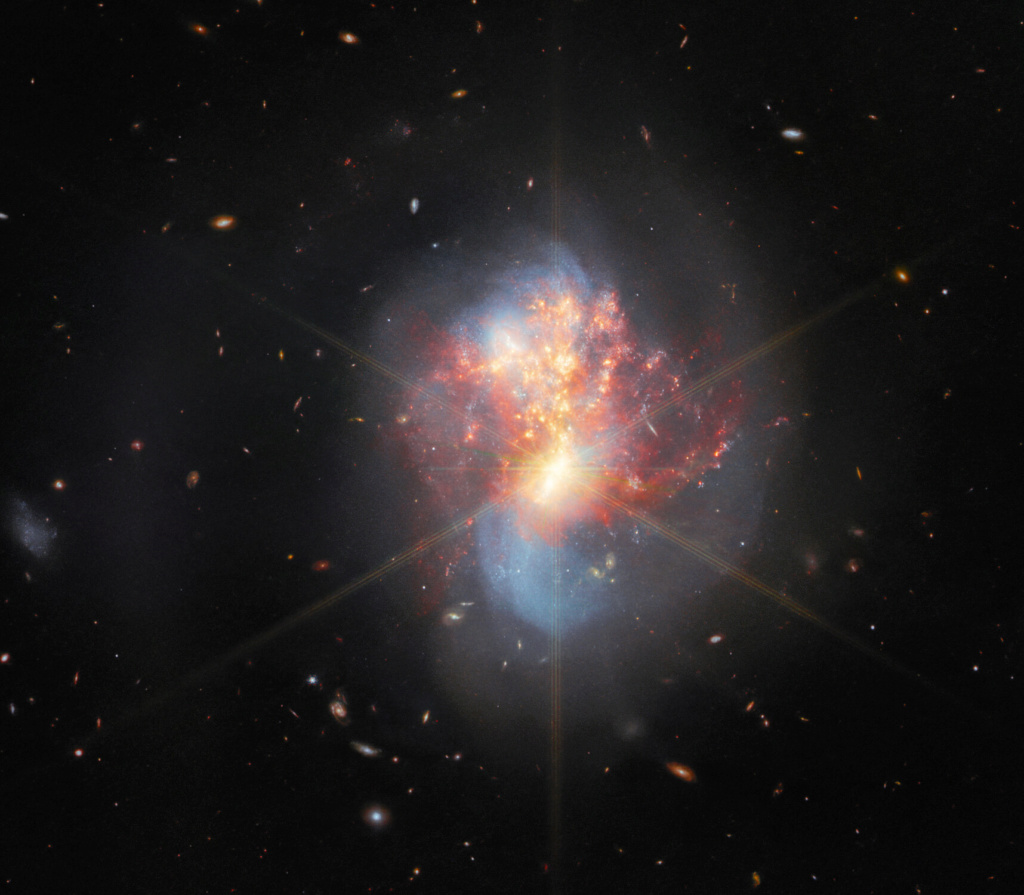James Webb takes amazing pictures of the early universe
The James Webb Space Telescope has captured a stunning new image that shows the collision of two galaxies known as IC 1623, resulting in a wave of stars invisible to other telescopes. Scientists said that this collision produces stars at a rate 20 times faster than our Milky Way galaxy, according to the newspaper "Russia Today".
IC 1623 is located about 274 million light-years away. This means that the light took about 270 million years to travel to the James Webb Space Telescope. And so the state in which we see these galaxies is as it was all that time, and therefore we see through them the past time.
This amazing event is known as a 'galaxy merger', which creates a fascinating display of star formation. These merging galaxies may be in the early stages of forming a supermassive black hole.
The galactic clash was previously imaged by other telescopes, including James Webb's predecessor, the Hubble Space Telescope, which specializes in detecting optical light (the types of wavelengths visible to the human eye).
But because IC 1623 is wrapped in a thick shield of dust, astronomers have not been able to go deeper into galaxies to see the stars forming in them.
This is a remarkable achievement in astrophotography so early in the James Webb Space Telescope mission, given that it was only launched in December of last year.
The European Space Agency said: "A dense dust beam prevented these valuable insights from the perspective of telescopes like Hubble. However, James Webb's infrared sensitivity and impressive accuracy at those wavelengths allow him to see beyond the dust, resulting in a stunning image. The two galaxies in IC 1623 are sinking into each other in a process known as 'galactic merging'.
IC 1623 is extremely bright when observed in the infrared, and has long been of interest to astronomers.
One of the two galaxies, the bright infrared galaxy, IC 1623B, contains a large amount of warm, dense gas. There is also a warm, dense gas in the interference region that connects the two nuclei.
The European Space Agency explained that "the continuous intense starburst causes intense emission of infrared radiation. The merging galaxies may be in the process of forming a supermassive black hole."
Source:websites


